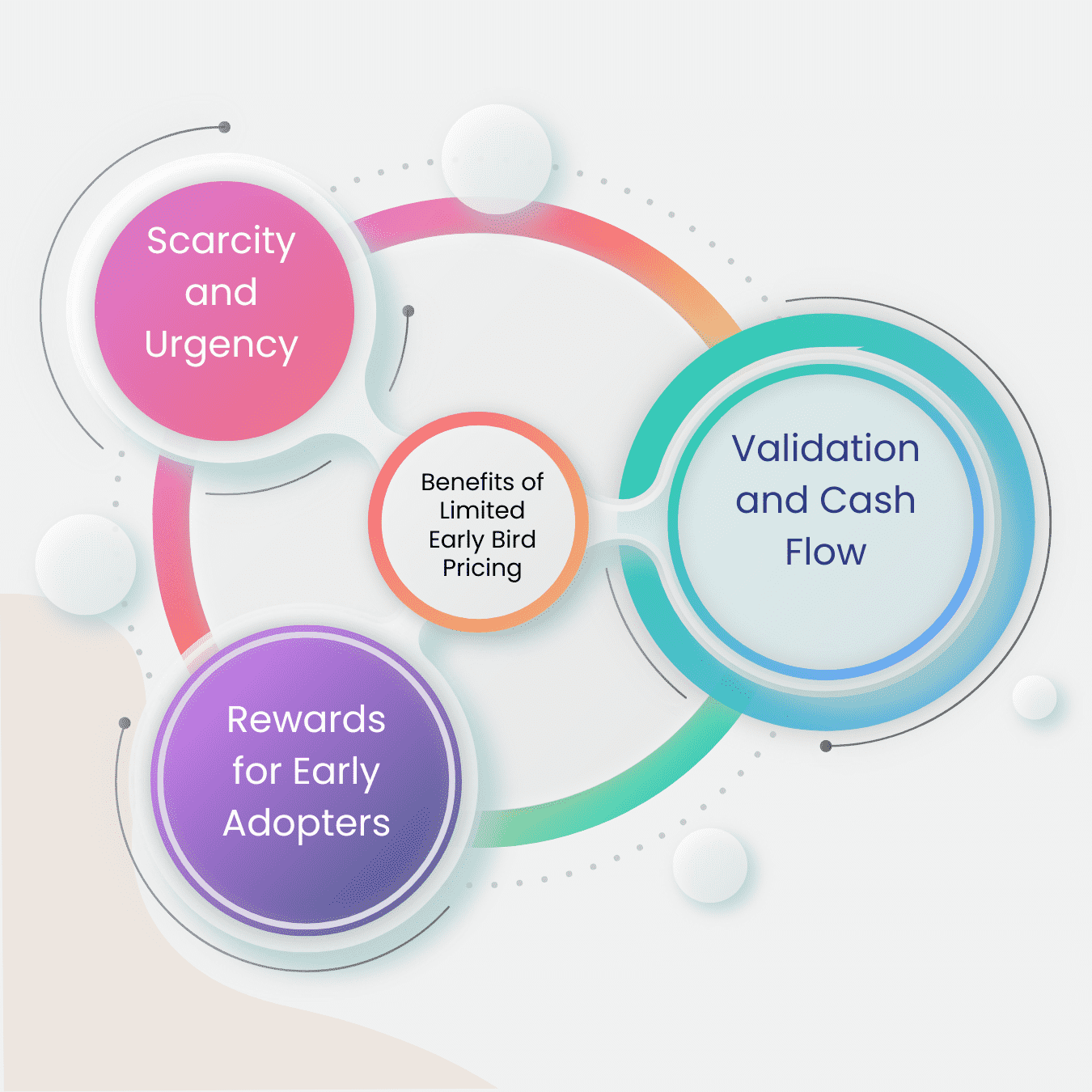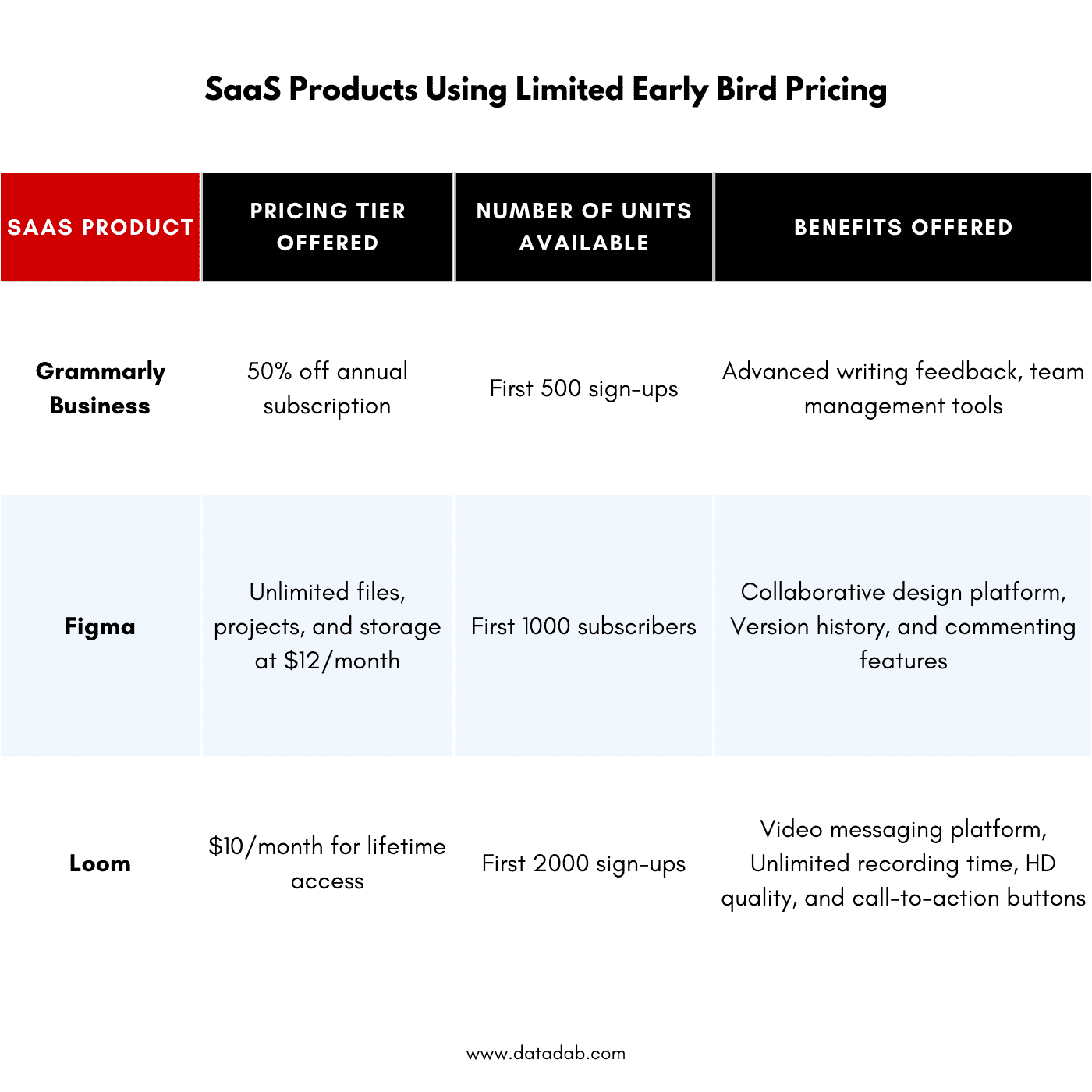Imagine you’re about to launch a new SaaS product that you’ve been working on for months. You have a great landing page, a solid value proposition, and a list of eager prospects waiting to try it out.
But how do you make sure that your launch is not just a flash in the pan, but a sustained success that generates revenue and growth?
One way to do that is to use limited early bird pricing.
This is a technique where you offer an exclusive pricing tier available in limited quantities for your early adopters. It’s like giving them a golden ticket to access your product before anyone else, at a special price that they won’t see again.

Why does this work?
How to implement limited early bird pricing
Here are some tips on how to use this technique effectively:
- Choose a pricing tier that is attractive and valuable for your target audience. It doesn’t have to be a huge discount, but it should offer something that they can’t get elsewhere or later. For example, you could offer lifetime access, extra features, premium support, or exclusive content.
- Set a clear limit on how many units are available at this price. You can use either an absolute number (e.g., 100) or a percentage (e.g., 10%). Make sure it’s realistic and not too high or too low. You want to create enough demand without overselling or underselling your product.
- Display the number of units remaining prominently on your landing page and throughout the signup process. Use visual cues like countdown timers, progress bars, or badges to highlight the scarcity and urgency. Update the number in real-time as people sign up.
- Communicate the value proposition clearly and persuasively. Explain why your product is worth buying now rather than later. Highlight the benefits of being an early adopter and what they will miss out on if they wait too long.
- Create a sense of community and excitement among your early adopters. Encourage them to share their experience with others through social media, testimonials, reviews, or referrals. Give them access to exclusive forums, groups, events, or webinars where they can interact with you and other users.

Examples of SaaS products using limited early bird pricing
Here are some examples of SaaS products that have used this technique successfully:
- Superhuman, an email client that claims to be “the fastest email experience ever made.” They offered lifetime access at $30/month for their first 1% of users (around 3000 people), creating a huge buzz and demand for their product.
- Notion, an all-in-one workspace for notes, tasks, documents and more They offered unlimited storage and collaborators at $4/month for their first 10k users They also gave away free credits for referrals and social sharing They grew rapidly through word-of-mouth and became one of the most popular productivity tools today.
- ConvertKit, an email marketing platform for creators They offered lifetime access at $29/month for their first 1000 customers They also ran several webinars and giveaways to attract more signups They used the revenue to hire more engineers and improve their product quality.
Limited early bird pricing is a powerful way to launch your SaaS product with momentum and traction.
It can help you create scarcity, urgency, reward, validation, and cash flow. It can also help you build a loyal community of early adopters who will spread the word about your product. If you’re planning to launch soon, consider using this technique as part of your strategy.

